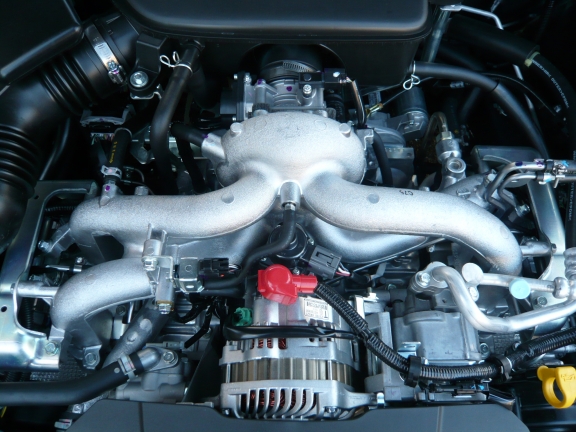Why do Porsche and Subaru adopt a horizontally-opposed engine?
It's only Subaru (A common development production car with Toyota Motor is included.) and Porsche to adopt a horizontally-opposed engine in the world at present. What do you have for the factor less remarkably recently here for the horizontally-opposed engine adopted as Alfa Romeo and Citroen before?
Renewal date :2015/09/15
As the name suggests and the layout by which a piston was arranged levelly in left and right are the feature for a horizontally-opposed engine and a horizontally-opposed engine. Axial will be light and be the wide outward form in the top and the bottom short by this, and other direct lines and engines of type V are something from which a member is different. Because a boxing player seems to hit it with a glove each other at all, this horizontally-opposed engine and a piston of symmetricalness are often called boxer engine.
Further, the thing curly Benz invented originally doesn't know much about a horizontally-opposed engine (It isn't adopted as Mercedes-Benz at present.)
Subaru Horizontally-opposed engine.
It's put in a photo album.
Source 1 - http://ja.wikipedia.org/wiki/%E3%82%B9%E3%83%90%E3%83%AB%E3%83%BBEL15
The merit of the horizontally-opposed engine
Little of the vibration is mentioned first. A piston goes back and forth between a horizontally-opposed engine in a crosswise direction. For one between the piston to deny mutual inertia force each other by this, vibration can be suppressed. While a piston of a direct line and a V-engine goes back and forth in the top and the bottom direction, this will be big advantage. Next the high roadability. Flatness and a jam have engine total height lower than on the structure arranged flat, a general direct line and type V, and for a piston to become, a horizontally-opposed engine becomes low center of gravity.
An engine becomes the low center of gravity and achieves high run kan stability because the full length also becomes short itself compactly. And to become explosive at equal intervals, it'll be smooth feelings. Peculiar exhaust sound is also enjoying a fan as a boxer sound by the feature, and this is also the merit of the kind with the horizontally-opposed engine.
Boxer engine
なぜポルシェとスバルだけが水平対向エンジンを採用するのか?
現在、世界で水平対向エンジンを採用しているのはスバル(トヨタ自動車との共同開発生産車含む)とポルシェのみとなっています。以前はアルファロメオやシトロエンなどにも採用されていた水平対向エンジンは、ここ最近めっきり減ってしまった要因は何があるのでしょうか。
更新日:2015/09/15
水平対向エンジンと水平対向エンジンはその名の通り、ピストンを左右に水平に配置したレイアウトが特徴です。これにより、軸方向が短く上下に薄く幅広い外形となり、他の直列やV型のエンジンとは一味違う物となっています。この水平対向エンジン、左右対称のピストンがまるで、ボクシング選手がグローブで打ち合うように見えることから、ボクサーエンジンとしばしば呼ばれることもあります。
なお、水平対向エンジンは元々、カールベンツが発明したことはあまり知られていません(メルセデスベンツには現在、採用されていません)。
まず振動の少なさが挙げられます。水平対向エンジンは、ピストンが横方向に往復します。これにより、ピストン同士が互いの慣性力を打ち消し合うため、振動を抑えられます。これは直列やV型エンジンのピストンが上下方向に往復するのに対し大きなアドバンテージとなります。次に高い走行安定性です。水平対向エンジンは、ピストンが水平、つまりはフラットに配置する構造上、一般的な直列やV型よりもエンジン全高が低くなるため低重心となります。
また、エンジン自体も全長が短く、コンパクトになっているため、低重心と相成り高い走行刊安定性を実現します。そして、等間隔爆発となるため滑らかなフィーリングとなります。また、独特な排気音も特徴で、ファンにはボクサーサウンドとして親しまれており、これも水平対向エンジンのある種のメリットです。











